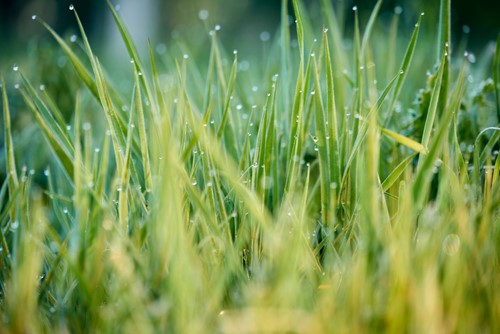
Many aspects of caring for a lawn are seasonal, like using lawn fertilizer in spring. However, in most climates, fertilizing multiple times a year is the key to a healthy lawn. To help you accomplish your lawn goals, here are some tips for applying lawn fertilizer at the right time:
What’s the best fertilizing schedule?
Many homeowners follow a basic fertilizing schedule suggested by various lawn companies. Here is a basic example:
In early spring, use a lawn fertilizer containing a crabgrass preventer. Crabgrass is one of the most problematic lawn weeds, and stopping the seeds from germinating early in the season can save you time and effort later in the year.
In the early summer, fertilize again with a more general weed control fertilizer. Alternatively, use a herbicide to prevent ground ivy, clover and other common lawn weeds.
Late summer is the perfect time for a “summer-proof” lawn fertilizer. These formulas strengthen the grass against periods of drought and hot temperatures.
Apply a winterizing fertilizer in the fall to prepare your lawn for cold temperatures. Not only will it help keep the lawn healthy during the winter, it can provide essential nutrients to help promote a green lawn in the springtime
Using compost
Compost has excellent advantages as a lawn fertilizer, and maintaining a compost pile means you have a constant supply. It’s worth using compost to help feed your lawn if you have it available. Not only will compost provide a wide range of essential nutrients, it can help improve soil texture.
Many homeowners prefer using compost and other organic fertilizers instead of commercial fertilizers and achieve great results. A hybrid approach is also an exceptional strategy for saving money and growing a more sustainable lawn.
Other lawn fertilizer considerations
Is it necessary to fertilize your lawn so often throughout the year? Many lawn experts argue such heavy feeding can hinder root development and disease resistance of some grass varieties. However, lawn fertilizers also can feed the weeds, potentially increasing the amount of maintenance needed to keep the grass healthy.
Regardless of your ideal lawn fertilizing strategy, it’s important to follow any included instructions and consult local regulations regarding chemical use. The more you know about lawn fertilizers and their use, the better you can care for your lawn.
About the Author

Tina Broyles, DRE 01009212 & NMLS 91630
Headline: Tina Broyles: Your Expert Real Estate Agent for Fremont, San Jose, and the Bay Area | eXp Realty
Bio:
As a dedicated real estate professional and a long-time resident of the California Bay Area, I have been proudly serving the real estate community since 1987. My mission is to provide my clients with unparalleled professionalism, in-depth market knowledge, and a caring approach that has resulted in a business built almost entirely on referrals.
Your Trusted Real Estate Advisor in the Bay Area
I specialize in the vibrant and diverse real estate markets of Fremont, Campbell, San Jose, Saratoga, Cupertino, Sunnyvale, Morgan Hill, Santa Clara, Mountain View, and Milpitas, CA. With over three decades of experience, I have a deep understanding of these communities and can provide you with the insights you need to make informed decisions.
One of the most consistent compliments I receive from clients is about my responsiveness to their needs. Your goals are my top priority, and I am committed to being there for you every step of the way. I am honored to have been voted "Best of Milpitas" every year from 2000 to 2020, a testament to my dedication to my clients and my community.
About My Business: eXp Realty
As part of the innovative eXp Realty team, I bring a diverse set of skills and a commitment to excellence to every transaction. We leverage cutting-edge technology that is "beyond expectation" to provide you with a seamless and efficient real estate experience. My team and I offer the perfect balance of experience and professionalism to help you achieve your real estate dreams in the Bay Area.
Community Involvement
I believe in giving back to the community that has given me so much. I am a happily married mother of two and a proud grandmother to two beautiful granddaughters, Audrina and Chesney. In my free time, I enjoy golfing, exercising, and my weekly Bible study. I am also passionate about serving the homeless community in Milpitas and supporting our local businesses.
I would be honored to get to know you and your family and put my extensive real estate experience to work for you.
Credentials:
